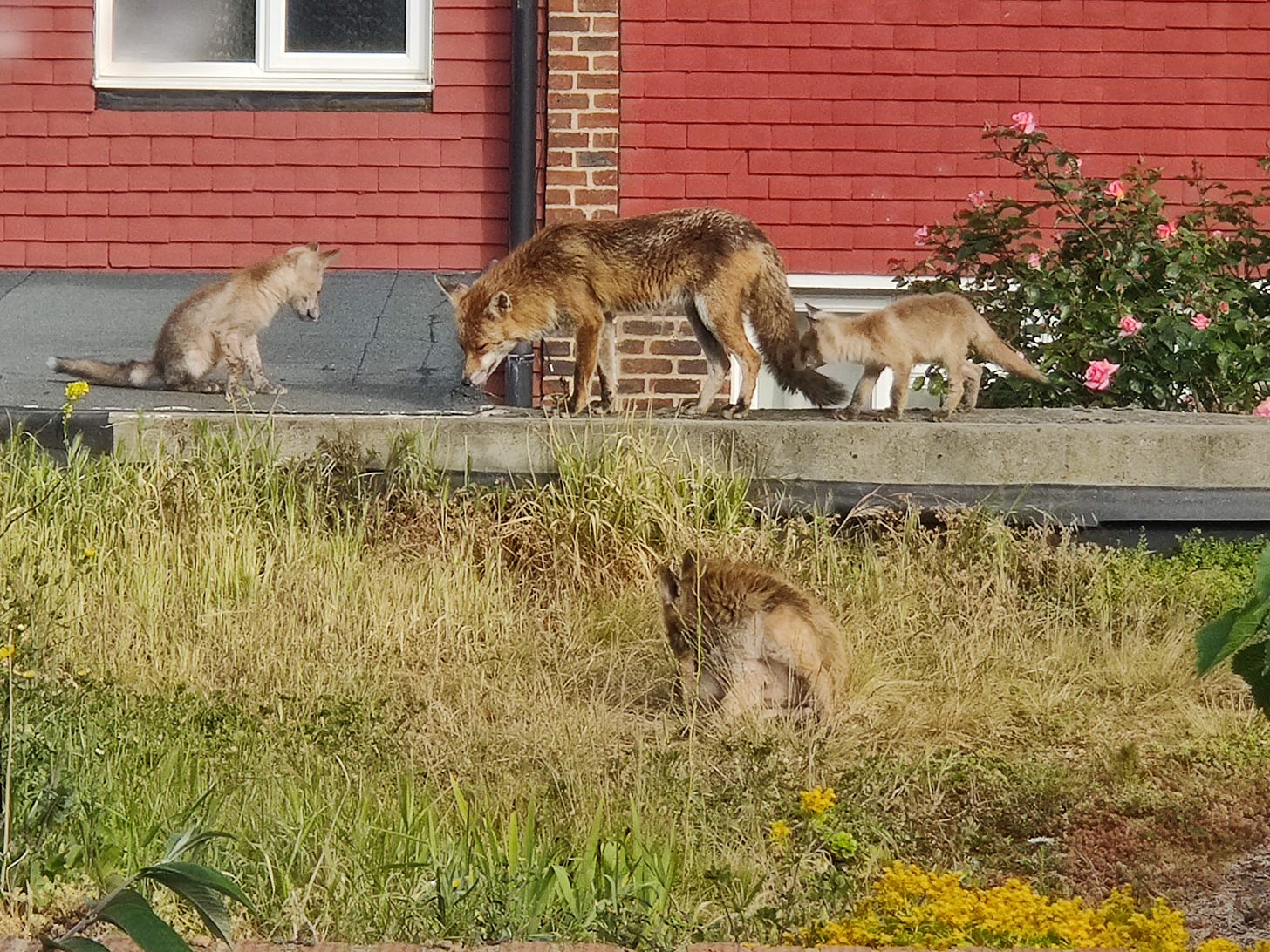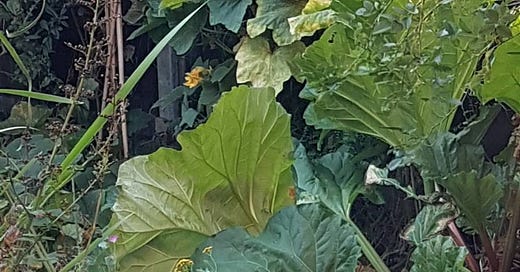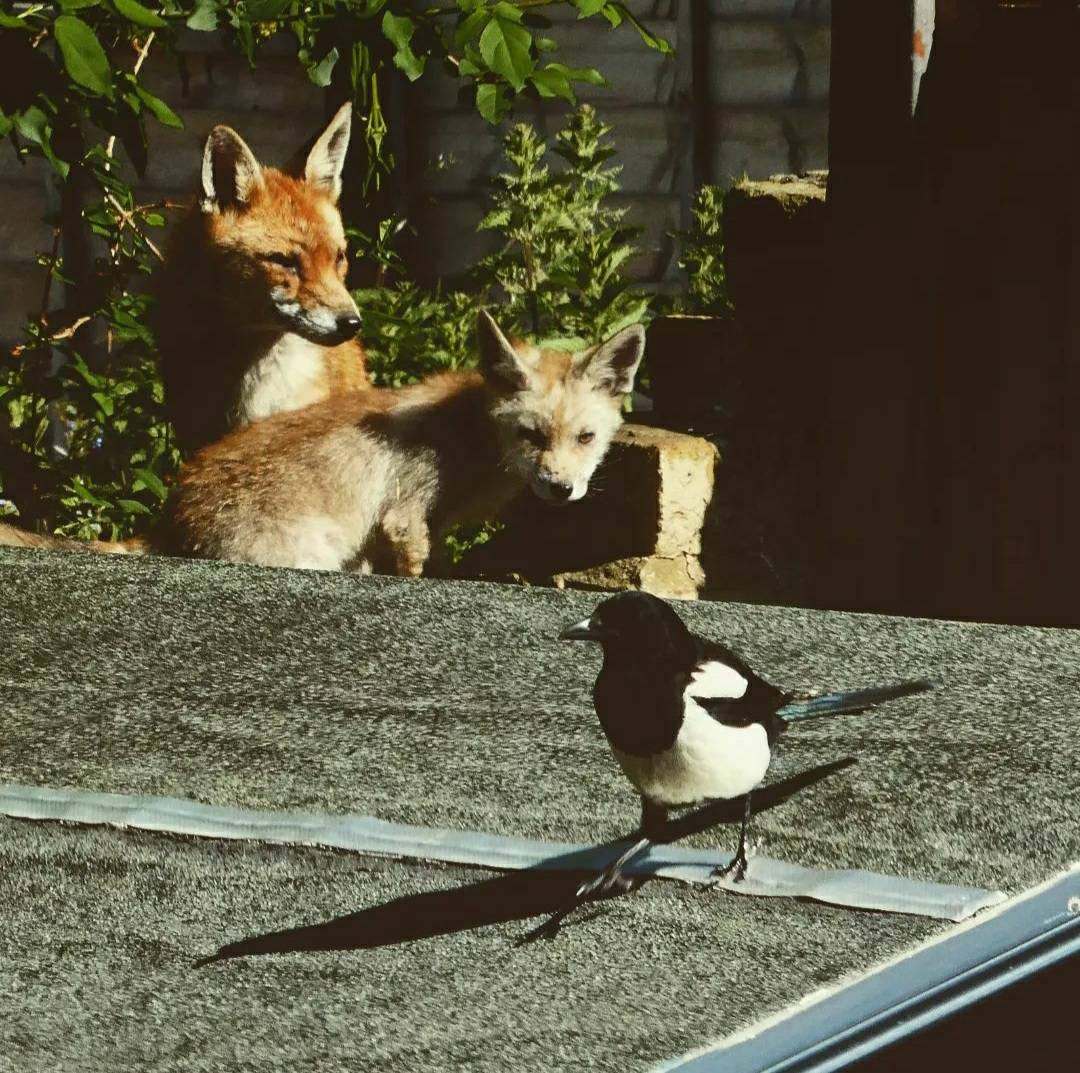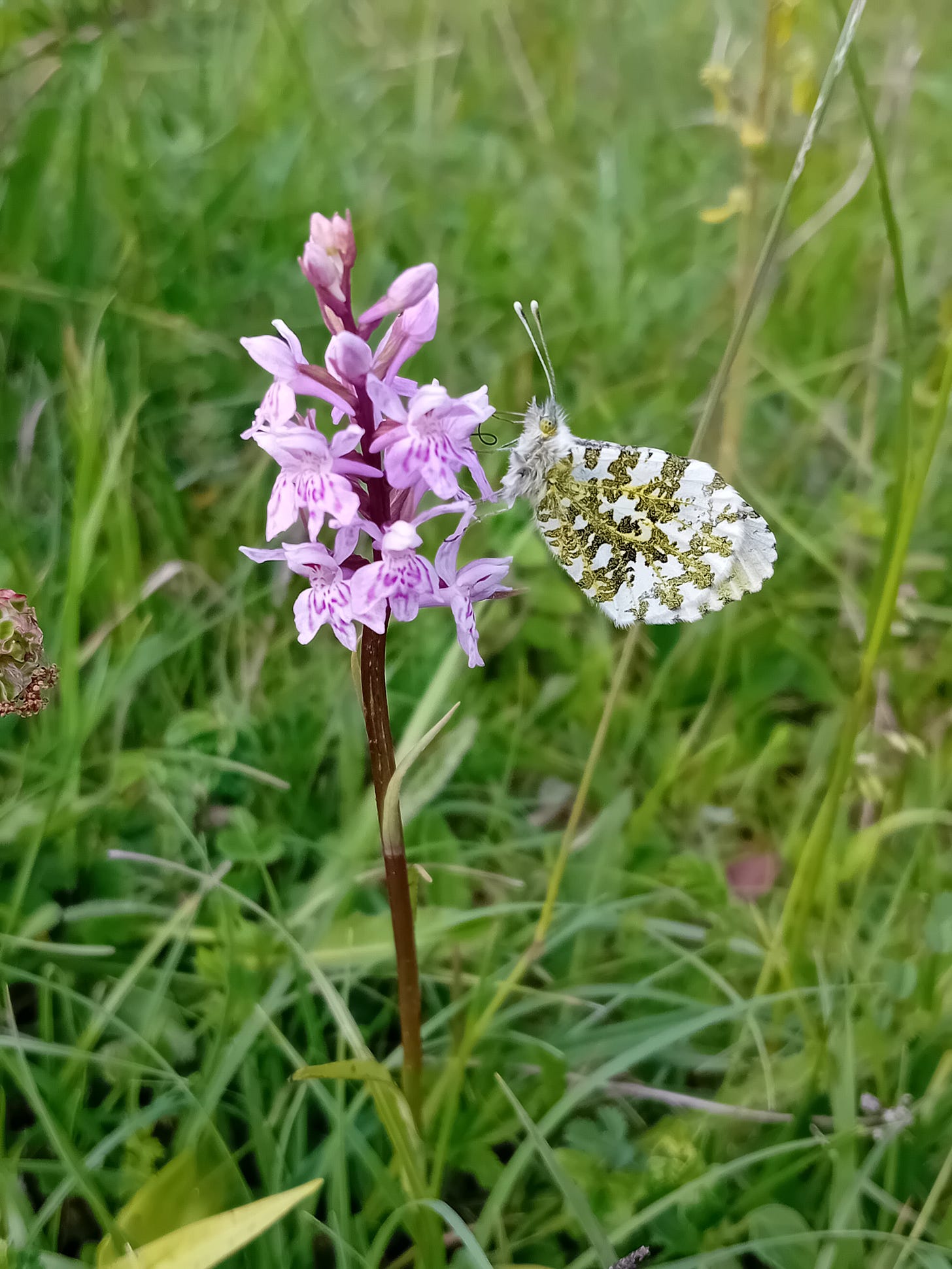I have rarely spotted foxes when out walking in the countryside, but I see them several times a week in London. They have adapted well to city life, our messy habits providing them with a ready supply of chicken bones and half-eaten burgers with which to supplement their diet. Some people even put out food specially for their local foxes. Perhaps that’s not so different from feeding garden birds but I’m deeply uncomfortable about encouraging wild animals to become dependent on humans and to lose the natural wariness of people that could be essential for their survival in other situations. I’d rather foxes had to depend on their own resources to keep themselves fed so they’ll still know how to use those skills should they need to in future.
I have seen the same pair of foxes several times recently. One is smaller than the other and I only ever see them together so I think they must be a mother and her cub, now almost fully grown. The smaller fox has coloured markings on their hind feet which look exactly like white ankle socks. One evening last week I glanced out of the bedroom window and spotted the two of them in the small communal garden in front of our house. They were chasing each other, and every now and then the larger one would leap on top of the smaller one, grabbing their tail or neck by the teeth but clearly not using enough force to do any harm as neither fox made a sound. There was no doubt a serious purpose to their rough and tumble – an older fox teaching a younger one how to defend themselves – but it looked for all the world as though they were just having a bit of fun on a fine summer evening. It made me realise how rare it is to see wild creatures enjoying themselves rather than focused on the business of survival. I watched them play-fighting for a good five minutes or more until eventually one of them ran out of sight and the other followed.

I often write at the kitchen table where I can see out through French doors into the garden, and it is not unusual to see a fox, strolling slowly round and sniffing here and there. Once I spotted one curled up under the hydrangea with their nose tucked under their tail, just like a pet cat asleep on the sofa. I tried to take a photo through the window but it was too far away to get a good view so I started to open the door as quietly as I could. Before I had even fully turned the key the fox was up and off, clearly far more alert than they looked. On other occasions I’ve looked up to find a fox staring through the window and if I catch their eye, they will hold my gaze for several seconds, both of us perhaps more comfortable with a layer of glass between us.
The foxes usually disappear at the first sign of human presence in the garden but there was one memorable occasion some years ago when I had a close encounter with one of these visitors. I was alone in the garden on a hot July afternoon and had fallen asleep in a deckchair. Waking with the uneasy sensation of being watched, I opened my eyes to see a fox standing there motionless, staring right at me and so close that I could see the individual hairs in their coat. Still half asleep and unnerved that the fox had come so near without me being aware, I stamped my foot and they disappeared at high speed. Perhaps if we’d both kept our nerve, we could have shared the garden for a while, but I will never know. Nor will I know whether the fox was simply passing through on their regular route and I just happened to wake at the same moment they spotted me or whether they didn’t recognise the reclining form on striped canvas as human and had been staring at me for a while, curious as to what this strange new creature could be.
Our garden is tiny and our neighbours along the terrace have similarly tiny gardens, but behind us are the long gardens of large Victorian houses which have been converted into flats. The unknown residents of these flats have unwittingly created a haven for local wildlife because for the most part they do not use their gardens. Now and then, someone makes a big effort to tidy up part of one of the gardens but as soon as they move out and someone less green-fingered arrives, nature regains control. The garden immediately behind ours has been left untouched for several years and has become particularly wild. It is divided in two by a small building – a garage or studio – and the section nearest to us is filled with trees and shrubs. It used to be some form of allotment and when we first moved in, we would hear the man who cared for it whistling to himself as he watered and weeded on summer evenings but the only notes we hear now are from the birds. If we disturb a fox in the garden, they usually leap back over the wall to the abandoned allotment. I think they probably have a den there or on the nearby railway embankment - a tangle of trees and undergrowth stretching for miles through the city and out into the countryside. Presumably it is along this embankment that the fox’s ancestors first arrived in the city. I wonder how many generations ago they left the Kent countryside to venture into the capital. Or perhaps I should really think of it as a return rather than a new arrival? After all, it is us who invaded their space as the city expanded. There would have been foxes here long before this was ever a part of London.
My summer encounter with the fox is based on part of my essay ‘A visitor’ published in The Pilgrim Magazine in December 2020.
To finish….
…a few things I’d like to share:
The evolution of the urban fox: This 2020 article provides an overview of some interesting research into the way in which foxes are evolving to adapt to life in towns and cities. The researchers found that urban foxes in the UK have smaller brains than their rural counterparts and a different shaped snout which makes it easier for them to search for food in built-up areas.
Wilding: The Return of Nature to a British Farm by Isabella Tree: Tree’s account of how she and her husband transformed the Knepp estate in Sussex is one of my favourite books. The way in which she combines her practical experiences with a discussion of what needs to change for the benefit of wildlife has also been an inspiration for my own writing. Now the book has been made into film which I’m looking forward to watching. There’s a trailer and details of screenings here.
A date for your diary: Saturday 6 July is National Meadows Day, a chance to celebrate wildflower meadows at a time when they should be looking glorious. Although we haven’t had much summery weather so far in 2024 in the UK, it does seem to have been a good year for wildflowers. I’ve seen some beautiful orchids this year, including this one in Happy Valley a few weeks ago, with the added bonus of an Orange Tip butterfly.







Lovely post! I love urban foxes and have had several accidental close encounters with them in Edinburgh.
Gorgeous! It’s such a treat to watch animals play.